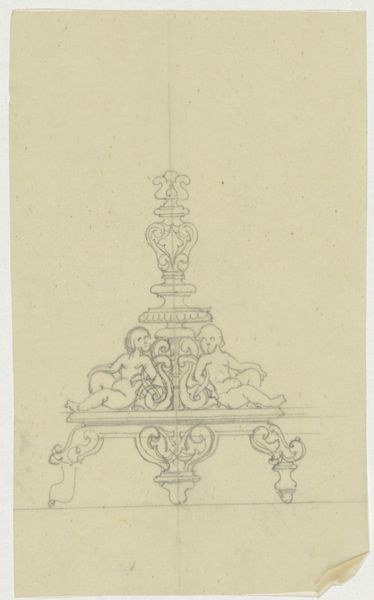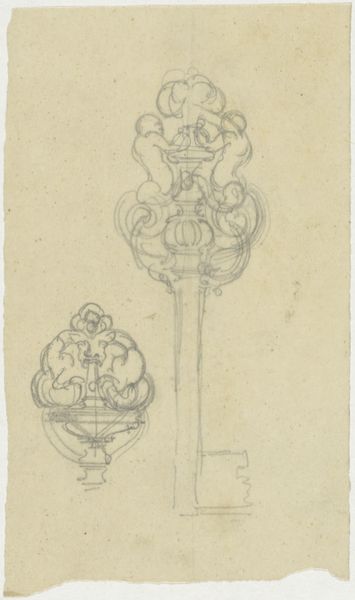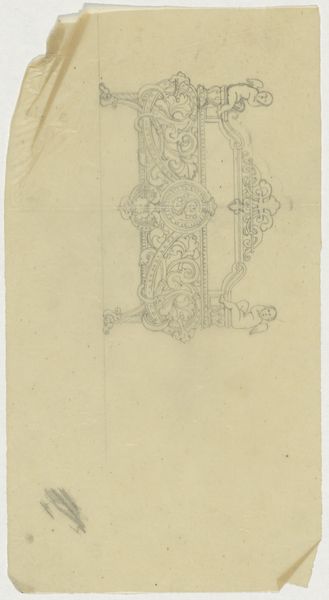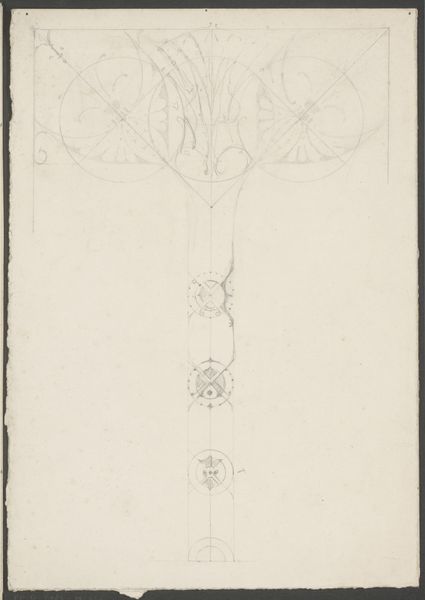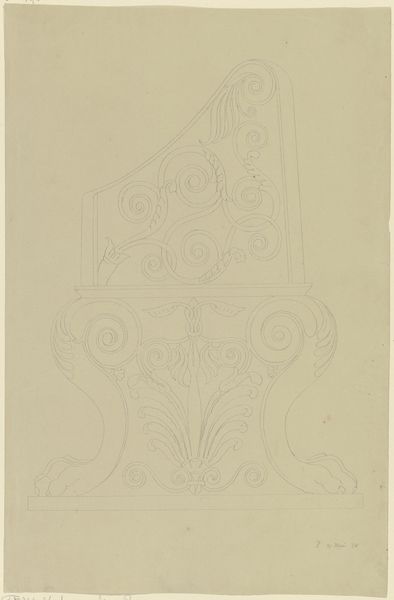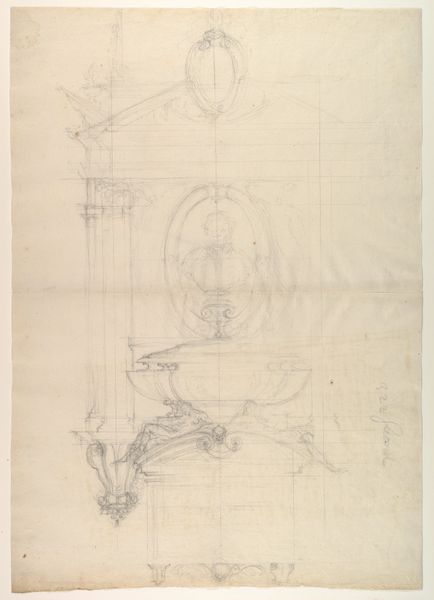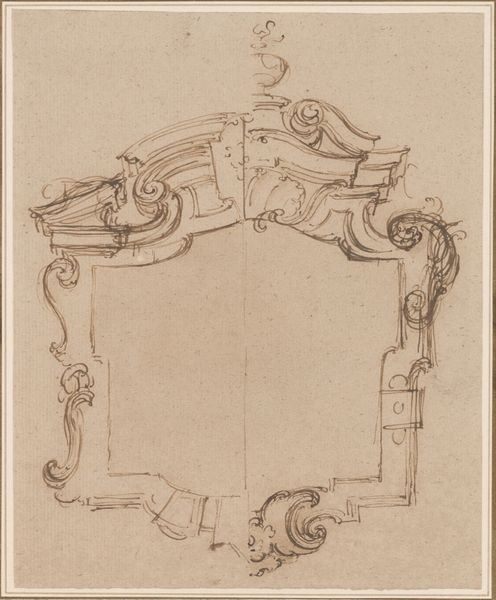
drawing, paper, pencil
#
drawing
#
allegory
#
neoclassicism
#
classical-realism
#
figuration
#
paper
#
pencil
#
genre-painting
#
miniature
Dimensions: height 112 mm, width 166 mm
Copyright: Rijks Museum: Open Domain
Curator: Looking at "Vuurbok," a pencil drawing on paper from around 1830 to 1850, I immediately notice its neoclassical style and how the allegorical figuration, rendered in delicate pencil strokes, strikes a peculiar balance. What’s your take? Editor: There is something unsettling in how this drawing presents its own process so barefaced. The linear quality of the medium shows its own construction with such clarity. The firm, Firma Feuchère, has made something so controlled from the apparent randomness of its source material, pencil and paper. What’s the social function here? Curator: It's difficult to pin down exactly. "Vuurbok", meaning fire dog, likely refers to the decorative andirons used to support burning wood in a fireplace. We see this motif, a winged figure above stylized snakes atop a pedestal, and we might contextualize the rising middle classes commissioning these objects, signifying their newfound wealth and embracing neoclassicism to link to historical legitimacy. Editor: That's helpful but doesn't capture the inherent class anxiety here. It must be contextualized. The act of drawing is also a type of intellectual property, this paper becomes evidence. It's fascinating how a rudimentary sketch captures labor in two senses: as the physical work needed to design this object but also as a marker of bourgeois respectability during a tumultuous period of industrial production and urbanization. This drawing isn’t *only* about high-art sensibilities; it's inextricably woven with contemporary commercial practice. Curator: I suppose it demonstrates an interesting tension within the social role of art – how these decorative elements can represent wealth but are simultaneously available for wider dissemination through visual mediums like drawing. Perhaps these detailed designs empowered more modest producers and workshops by allowing them access and to some degree standardize fashionable aesthetics. The miniature scale also speaks to how this imagery could circulate. Editor: Exactly, it's a circulation that speaks of an ever-widening audience and application! Seeing this as merely allegorical undermines the function this art once held in daily manufacturing, reminding us how economic pressures underpin even aesthetic forms of expression. It shows labor and commercial distribution more directly, albeit subtly, than most realize at first glance. Curator: It certainly shifts my perception. What initially appeared purely ornamental now reveals layers of production, market access, and a certain aspiration toward status! Editor: And for me it reframes neoclassical symbolism as an artifact that documents material production and commercial enterprise. The residue left is of class performance that resonates profoundly with audiences even now.
Comments
No comments
Be the first to comment and join the conversation on the ultimate creative platform.

